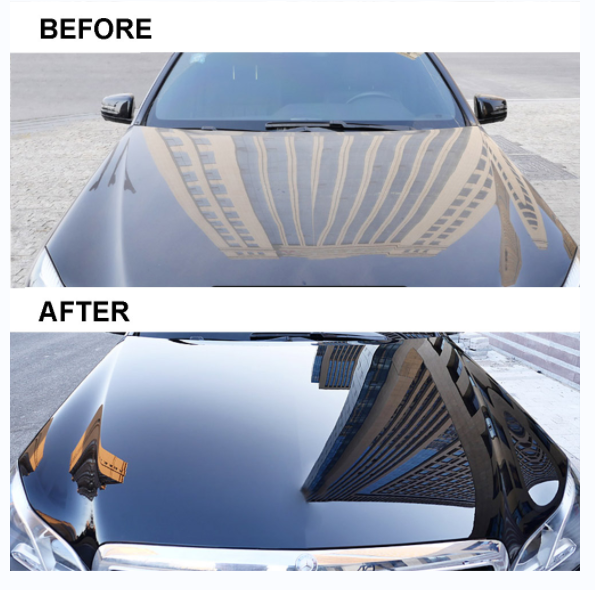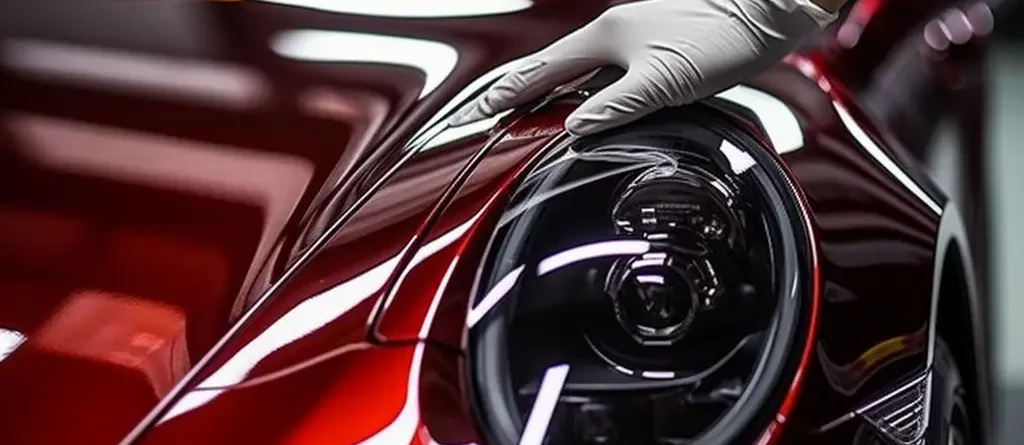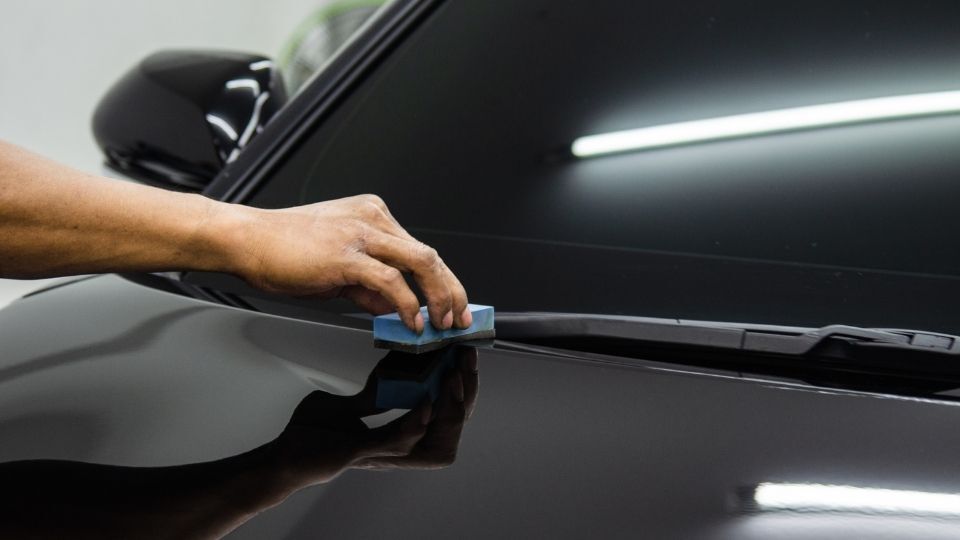Protect Your Car from the Elements with Ceramic Coating Technology
Protect Your Car from the Elements with Ceramic Coating Technology
Blog Article
Ceramic Layer vs. Conventional Wax: Which Provides Much Better Long-Term Protection?
The debate in between ceramic coatings and traditional wax for lorry protection has amassed substantial attention amongst auto lovers and specialists alike. Ceramic finishes flaunt exceptional long life and resistance to environmental elements, yet the intricacy of their application increases inquiries about ease of access and usefulness.
Summary of Ceramic Coating
Ceramic coating has obtained substantial appeal amongst automotive enthusiasts and detailers alike because of its innovative safety top qualities. This ingenious modern technology is created to produce a sturdy, hydrophobic shield over an automobile's paint surface area, dramatically boosting its resistance to ecological impurities such as dust, UV rays, and chemical stains. Unlike traditional wax, which provides a temporary layer of protection, ceramic coatings bond at a molecular level with the paint, offering lasting sturdiness-- usually expanding past 2 years with correct maintenance.
The application process includes meticulous prep work of the vehicle's surface area, consisting of cleansing and polishing to guarantee optimal bond. Once applied, the finishing remedies to create a durable layer that not only adds deepness and gloss to the paint however additionally simplifies upkeep. With its hydrophobic homes, ceramic coating permits water and dirt to glide off even more easily, reducing the regularity of laundries and decreasing the danger of swirl marks.
Additionally, ceramic finishings are available in various solutions, enabling individuals to select items tailored to their certain requirements and preferences. On the whole, ceramic layer represents a considerable improvement in paint defense technology, supplying remarkable efficiency contrasted to traditional alternatives.
Overview of Traditional Wax
Traditionally considered a staple in automobile treatment, wax functions as a popular option for those looking for an uncomplicated technique to enhance and shield their automobile's paint - ceramic coating. Automotive wax normally comprises natural ingredients, such as carnauba, or artificial compounds, developed to produce a safety layer externally of the paint. This layer not only enhances the lorry's gloss and beam but additionally offers a barrier against environmental impurities
The application of wax is usually user-friendly, making it available for both professionals and do it yourself fanatics. It can be applied by hand or machine, enabling versatility in the describing process. Once applied, wax calls for a curing period, after which it sets to develop a safety covering. Wax is likewise recognized for its capacity to push back water, promoting a beading effect that aids in the prevention of water places and rust.
However, while wax is reliable for enhancing the aesthetic charm of an automobile, it is essential to keep in mind that the protection it supplies may demand more frequent reapplication compared to alternative products, such as ceramic finishings. On the whole, traditional wax stays a favored option for those focusing on ease of use and prompt aesthetic improvement.
Resilience and Long Life Comparison
While both ceramic layers and standard wax offer protective benefits for vehicle paint, their longevity and durability vary significantly. Traditional wax, generally made from all-natural carnauba or artificial polymers, generally provides a safety layer that lasts about three to 6 months. This fairly brief life-span demands regular reapplication to keep ideal defense.
In contrast, visite site ceramic finishes are engineered from sophisticated nanotechnology, forming a covalent bond with the paint surface. This leads to a robust, hydrophobic layer that can endure for 2 to five years, relying on the item and environmental conditions. The premium durability of ceramic coatings is associated to their chemical structure, which uses enhanced resistance to scrapes, UV rays, and oxidation.

Defense Against Ecological Aspects
Safeguarding a lorry's paint from environmental aspects is vital for maintaining its appearance and value with time. Autos are regularly revealed to a variety of elements, consisting of UV rays, bird droppings, tree sap, acid rainfall, and road grime, every one of which can jeopardize the stability of the paintwork.
Ceramic finishings give a robust protection versus these ecological aggressors. Unlike conventional wax, which can weaken swiftly under UV direct exposure, ceramic finishings create a durable, hydrophobic layer that stands up to the hazardous effects of sunlight and toxic wastes. This advanced technology produces a chemical bond with the lorry's surface, supplying remarkable protection that lasts for years, also in extreme conditions.
Standard wax, while less complicated to apply, typically needs constant reapplication and offers minimal resistance to impurities and UV rays. In time, it can break down, leaving the paint vulnerable to scratches and oxidation. In comparison, ceramic coatings preserve their protective qualities longer, considerably minimizing the danger of paint damages and ensuring that the vehicle retains its aesthetic appeal. Consequently, ceramic layers are significantly recognized as the remarkable selection for read long-term defense versus ecological aspects.
Application and Maintenance Differences
The techniques of application and succeeding upkeep for ceramic layers and conventional wax vary considerably, impacting the overall user experience and efficiency of each item. Ceramic layers require a more complex application process, typically involving surface preparation that consists of washing, decontaminating, and polishing the car. As soon as the surface prepares, the ceramic finish is applied in a regulated environment, frequently requiring professional expertise to guarantee correct curing and bonding to the paint.

While both items improve lorry appearance, the longer-lasting protection offered by ceramic coverings might validate their preliminary financial investment, despite the even more demanding application process. On the other hand, standard wax stays a preferred choice for those looking for a less complex, albeit short-term, solution.

Final Thought
Finally, ceramic finishes demonstrate substantial advantages over standard wax in terms of sturdiness and environmental management. With a lifespan expanding 2 to 5 years and premium resistance to UV rays, dust, and chemical discolorations, ceramic finishings supply a much more efficient service for long-term vehicle maintenance. The application process might need professional experience, the resulting expense savings and reduced regularity of reapplication emphasize the value of ceramic coatings for those looking for ideal automobile security.
The debate between ceramic coverings and typical wax for lorry protection has amassed considerable interest among auto lovers and experts alike. Unlike standard wax, which gives a short-lived layer of protection, ceramic finishings bond at a molecular level with the paint, using durable sturdiness-- typically extending beyond two years with correct upkeep.
While both ceramic finishings and traditional wax deal protective benefits for auto paint, their longevity and longevity differ significantly. For vehicle fanatics seeking lasting protection, ceramic finishings provide an engaging benefit over traditional wax items.
In conclusion, ceramic finishes demonstrate significant benefits over typical wax in terms of sturdiness and ecological security.
Report this page